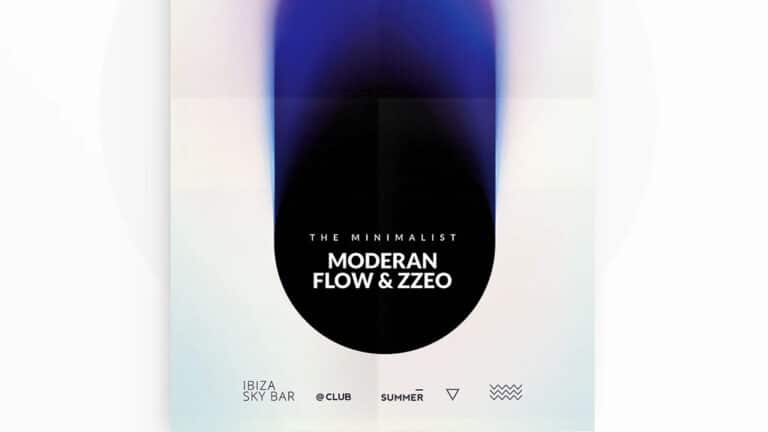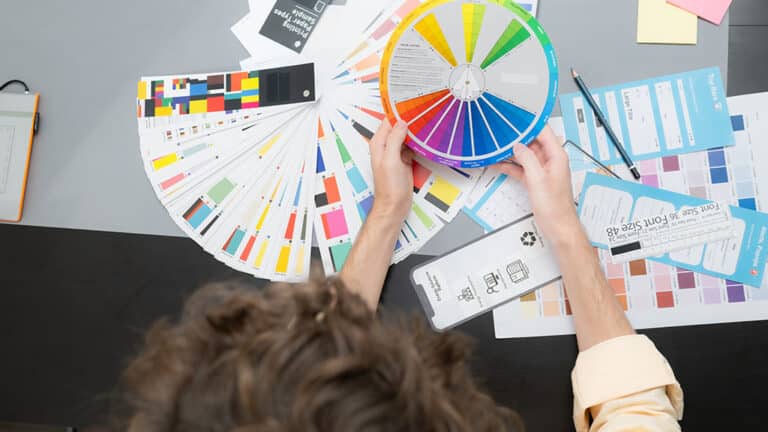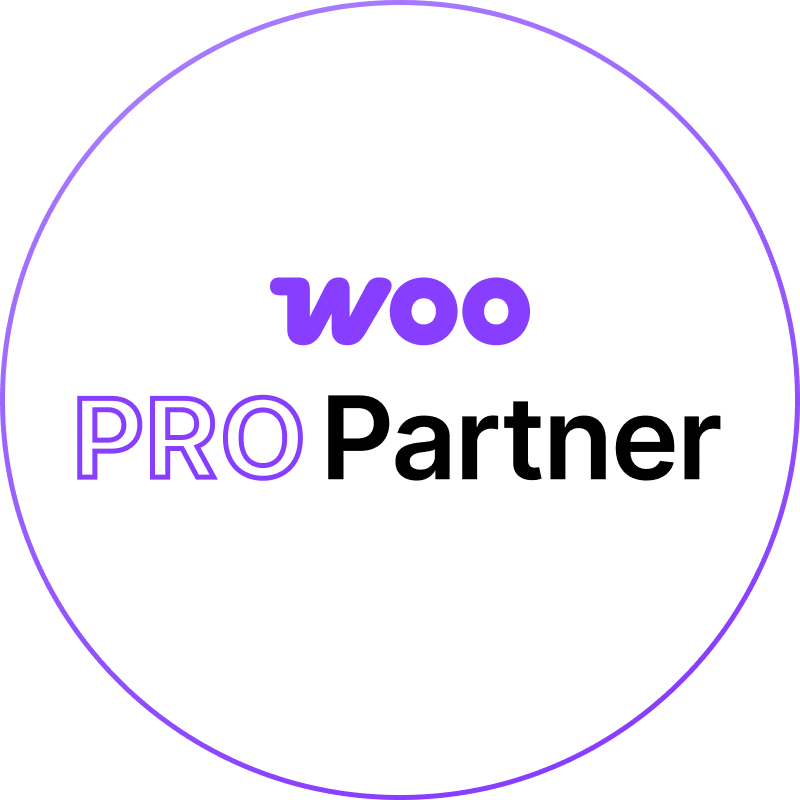Graphic Design for Print vs. Digital: What’s the Difference?
Graphic design isn’t one-size-fits-all. A flyer printed for a local event and a banner ad running on a website may serve similar promotional purposes, but the design process for each is fundamentally different. Print and digital designs are built for two separate mediums—each with its own technical requirements, limitations, and best practices. Understanding these differences is essential for businesses that want to maintain brand consistency, avoid production errors, and maximize visual impact across every platform.
When design is approached with the medium in mind, the final product feels seamless and intentional. A beautifully printed brochure with vibrant color and crisp typography creates a tactile, trustworthy brand experience. A well-designed digital graphic, on the other hand, needs to load quickly, adapt to screen sizes, and possibly include interactive elements to drive action. If you apply the same design logic to both, you risk falling short in one—or both—areas.
For businesses looking to scale their marketing efforts across print and digital, this awareness can mean the difference between a successful campaign and a missed opportunity. Whether you’re working in-house or hiring professionals, choosing a designer or team that understands these differences—and can adapt accordingly—is crucial. That’s why working with a full-service partner like a graphic design service that handles both print and digital assets can ensure every visual is optimized from the start.
Color Modes: CMYK vs. RGB
Color is one of the most noticeable—and most misunderstood—differences between print and digital design. What looks bright and bold on screen doesn’t always translate the same way on paper, and that’s largely due to the difference in color modes: RGB and CMYK.
RGB (Red, Green, Blue) is the color model used for digital design. It’s based on light, which is why screens can display incredibly vibrant and luminous colors. When you’re designing for websites, social media, or email campaigns, RGB is the standard. It allows for a broader spectrum of colors and supports effects like gradients, transparency, and overlays that are often used in digital media.
CMYK (Cyan, Magenta, Yellow, Black), on the other hand, is the color model used in print. Printers mix these four inks to reproduce colors on paper. The CMYK color gamut is more limited than RGB, which means some colors—especially bright blues and greens—may appear duller or different in print than they do on screen.
Designers must convert digital files to CMYK before sending them to print, and ideally, they should design in CMYK from the beginning of a print project to ensure accuracy. Failure to consider color mode early on can result in unexpected shifts, costly reprints, and inconsistent branding across media.
Resolution and Image Quality
Another critical difference between print and digital design is image resolution. The quality of your visuals can make or break your design—especially when it comes to printed materials. A photo that looks crisp and clean on your website might turn out blurry or pixelated when printed if it’s not saved at the correct resolution.
Print design requires high-resolution images, typically 300 DPI (dots per inch). This ensures that images appear sharp and detailed when physically produced. Anything lower can result in grainy, unprofessional output—something that’s especially noticeable on larger printed items like posters, banners, or packaging.
Digital design, by contrast, uses lower resolution, usually 72 PPI (pixels per inch), because screens don’t require as much detail. In fact, using high-resolution images in digital formats can actually slow down load times and reduce performance on websites and apps. For digital platforms, optimization is key—balancing quality with file size to ensure fast loading without sacrificing visual integrity.
For designers, understanding when and how to use the right resolution is essential. It’s not just a technical detail—it directly impacts user experience, print production, and the professionalism of your final product. Businesses should always ensure that their visual assets are prepared with the right resolution for their intended use to avoid costly mistakes and poor performance.
File Formats and Delivery
One of the most overlooked but essential distinctions between print and digital design is the file format. Delivering the wrong file type for a specific use can result in poor quality, formatting errors, or even rejection by a printer or platform. Understanding which format to use—and when—is key to maintaining design integrity from creation to final delivery.
For print, the preferred file format is often PDF, especially when it’s exported with print-ready settings. A PDF preserves vector graphics, ensures fonts are embedded, and retains layout accuracy. This format is reliable across different print vendors and software programs. Other common formats for print include AI (Adobe Illustrator) and EPS for logos or designs that may need to be resized without losing quality.
In contrast, digital design favors file types optimized for screen use. JPEGs and PNGs are standard for web and social graphics—JPEGs for photographs or detailed images, and PNGs for graphics that require transparent backgrounds or sharper lines. SVGs are used for scalable vector graphics on websites and apps because they retain clarity regardless of size and support animations or interactions when coded properly. GIFs and MP4s come into play for digital animations or motion graphics, especially in ads or email marketing.
The way files are exported also matters. Print files should include bleed areas, crop marks, and be saved in CMYK color mode at 300 DPI. Digital files should be compressed appropriately, use RGB color mode, and be optimized for faster loading without losing clarity. A designer with experience in both formats will know how to prepare and deliver files correctly, avoiding frustrating revisions and potential delays in your project timeline.
Layout and Dimensions
Print and digital platforms each demand unique approaches to layout and sizing. Designing without these distinctions in mind can result in visuals that look off-balance, get cropped awkwardly, or don’t translate well between mediums.
In print design, physical dimensions and fixed sizing rule the process. You know exactly how big a brochure, poster, or business card will be, which allows for more precise placement of elements. Designers also need to account for print-specific factors like bleed (the area that extends beyond the trim edge to prevent white borders after cutting), margins, and safe zones to make sure no text or key visuals are too close to the edge. Everything must be laid out within clearly defined limits.
Digital design, however, is more fluid. The same design might be viewed on a phone, tablet, or desktop—all with different screen sizes and resolutions. This introduces the concept of responsive design, where layouts must adapt to different devices without breaking the visual flow. Grids, flexible containers, and media queries in code are used to manage this adaptability. It’s not just about size—it’s about flexibility and user experience.
Digital layouts also need to consider interactivity. Buttons, links, hover states, and animations all play a role in how users experience the design. These features don’t exist in print, so designers working in digital must think beyond static layouts and consider how users will engage with the content.
Understanding these layout and dimension differences helps ensure your design works exactly where and how it’s intended—whether it’s being printed in bulk or delivered to thousands of screens.
Typography and Readability
Typography plays a critical role in both print and digital design, but the rules of engagement differ across the two. While aesthetics are important, the ultimate goal is legibility and clarity—something that varies depending on medium and context.
In print, designers have more control over typography. The resolution is high, and the reader’s environment is relatively stable. You can use fine details in fonts, rely on tight kerning, and have confidence that what you design will be exactly what the end-user sees. Serif fonts, for example, often work beautifully in print, as their detail and elegance come through clearly on the page.
Digital design, on the other hand, requires a more cautious approach. Users may be viewing content on a small screen, in poor lighting, or while multitasking. Fonts need to be legible at smaller sizes and rendered well on various browsers and devices. Sans-serif fonts are more commonly used in digital design for their clean, readable appearance. Designers must also consider line spacing, character width, and text alignment to improve readability on screens.
In both print and digital, typography should reflect your brand and enhance your message. But how you apply it—and which fonts you choose—depends heavily on the medium. Making the right typographic decisions ensures that your content is not just seen, but understood.
User Interaction and Functionality
One of the most significant distinctions between print and digital design is interactivity. Print is static—once something is on the page, it doesn’t change. Digital, however, is dynamic and interactive, allowing designers to guide users through motion, animation, and clickable elements.
In print, a brochure or flyer can’t respond to a reader’s actions. Designers must rely entirely on layout, typography, imagery, and messaging to capture attention and direct focus. There’s no scrolling, clicking, or hovering—everything must be communicated within the constraints of a flat page. This makes clarity and hierarchy even more critical, as users don’t have the ability to explore content beyond what’s presented.
Digital design opens the door to functionality that print can’t offer. Call-to-action buttons, links, embedded videos, image sliders, and animations all give the user ways to interact with content. A website, for instance, guides users from one page to the next. An email newsletter may encourage a click-through to a product page. Interactive infographics allow for exploration of data through motion and sound.
Because of these capabilities, digital designers must think beyond the visual and consider user flow. How does the user move from one section to another? Where do they hover or click? What happens when they scroll? All of these touchpoints shape the experience and must be accounted for during the design process.
Understanding the functional potential of digital design helps businesses build more engaging, user-friendly experiences. Print delivers impact through form, quality, and visual storytelling, but digital offers an evolving, responsive journey. Knowing how to leverage both mediums gives your brand a stronger presence wherever your audience engages.
Printing Constraints vs. Digital Flexibility
Print design must respect physical constraints, while digital design is more flexible and forgiving—but that flexibility can also create challenges if not handled properly.
With print, you’re working with physical materials. Paper type, ink selection, finishing techniques, and production methods all impact the final result. For example, metallic inks or embossing can add a luxurious touch, but they come at a higher cost and require specialized equipment. Designers must also factor in how colors will appear on different paper stocks, how folds affect layout, and how binding may hide or crop elements.
These limitations require meticulous planning. A printer might have strict file setup requirements, and even small errors—like missing bleeds or using RGB instead of CMYK—can result in costly reprints or compromised quality. Once something goes to press, you can’t undo it.
Digital, in contrast, offers near-limitless flexibility. Designs can be changed in real time, updated instantly, and A/B tested across audiences. There’s no need to worry about ink coverage or paper grain, and visuals can be animated, interactive, and personalized based on user behavior.
That said, digital flexibility comes with its own set of rules. Websites must be responsive, emails must render across dozens of clients, and assets must be optimized to load quickly on different devices. Poorly optimized digital design can lead to sluggish performance, layout issues, or accessibility problems—hurting user experience and engagement.
The key is knowing how to design for the unique strengths and limitations of each medium. Print offers permanence, tactile appeal, and a high-end impression. Digital offers agility, engagement, and scalability. Both are valuable—but only when approached with their specific context in mind.
Turnaround Time and Production Workflow
Another important difference between print and digital design is the timeline. Print design requires more lead time, while digital often moves faster—but with speed comes the need for constant iteration.
Print production is a longer process that includes file preparation, proofing, printing, drying, cutting, and shipping. Because of this, designs must be finalized well in advance, especially for large-scale print runs or materials with custom finishes. If something is incorrect after printing, the only solution is to reprint—an expensive and time-consuming fix.
Digital design is more forgiving. You can test content live, make changes on the fly, and respond to analytics in real time. A banner ad that isn’t performing well can be redesigned and relaunched in hours. A landing page layout can be split-tested and optimized based on actual user behavior. This level of speed and adaptability is one of digital’s greatest strengths.
However, this fast pace can lead to a lack of planning if not managed properly. Businesses often rush digital assets without a cohesive design system, leading to inconsistencies and errors. Even though revisions are easier, the expectation of instant updates can place strain on teams and increase pressure to “just get it out” rather than strategize.
Knowing the production timelines of each medium helps you plan campaigns effectively. Print should be reserved for materials that require permanence and tangible impact. Digital is ideal for content that benefits from experimentation, segmentation, or frequent updates.
Conclusion: Design with the Medium in Mind
Whether you’re designing a sleek brochure or a dynamic digital ad, understanding the fundamental differences between print and digital design is essential for creating work that performs well and reflects your brand at its best. Each medium has its own rules, constraints, and strengths—and treating them as interchangeable can lead to avoidable mistakes and missed opportunities.
Print demands precision, attention to production details, and a focus on visual clarity within a fixed space. Digital requires flexibility, responsiveness, and interactivity to create seamless user experiences across screens. The tools, techniques, and file formats used in each must be tailored to their context.
For businesses navigating both worlds, partnering with designers or teams who are fluent in both print and digital environments ensures that your branding is consistently high-quality—no matter where it appears. When design is executed with intention and respect for the medium, your message becomes stronger, your brand becomes more recognizable, and your marketing becomes far more effective.

















